Data for the period 2018-2022 (General Statistics Office of Vietnam, 2023) shows that the average contribution of cultural industries (CNVH) to added value reached nearly 3.5%/year.
Facing many challenges
This shows that the growth rate of the cultural and creative industries in Vietnam is increasingly improving and is somewhat superior to the 3.1% contribution of the global gross domestic product (GDP) of the cultural and creative industries in 2020, according to UNESCO's report. Also according to the General Statistics Office, the average production value of cultural and creative industries (at current prices) in the period 2018-2022 is estimated at 1,059 trillion VND (44 billion USD).
However, the IT industry in the world in general and in Vietnam in particular is facing many challenges. These are the rapid development and scope of influence of digital technology, the trend of digital transformation and some new technologies of the 4th industrial revolution that challenge the supply model of IT products to the market.

Dr. Nguyen Thi Thu Ha (Photo provided by the character)
The rise of global digital platforms and streaming services such as TikTok, Netflix, YouTube, Spotify, digital marketplaces, etc., as well as locally developed streaming platforms have changed the way people consume creative content.
In addition, the trend of e-commerce of cultural products is taking an increasing market share, breaking traditional revenue models for industries such as music , film, broadcasting and publishing... Consumers and audiences tend to consume online more than in previous years.
In this challenge, the digital aspect does not stop at being a form of cultural transmission from creator to audience, but rather reflects larger changes in the chain of cultural production cycles.
We are now facing a digital environment where the roles of communities, artists and audiences are changing thanks to the rapid proliferation of digital devices and digital platforms that facilitate the interactions and interventions of actors in this cycle.
This trend is changing the cultural value chain from creation to consumption, posing the problem of cultural enterprises having to change their business models accordingly. Not to mention, artificial intelligence (AI) is also a challenge for the creative role of artists and cultural and artistic practitioners.
AI is becoming a powerful creative and curatorial force in the arts, capable of not only representing cultural expressions well but also creating outstanding works of art or cultural products.
Another challenge is the effective protection and exploitation of intellectual property. Copyright and related rights mechanisms are not sufficient to support the development of the cultural industries, but require a synchronous legal system and state administration, and effective enforcement mechanisms on intellectual property to reflect the wide range of cultural industries and fields as present.
Opportunities are still open.
However, the above challenges also open up opportunities for the cultural industry in the coming time. The development of digital technology and new technologies expands the range of tools for practitioners and businesses to exploit for creation and distribution.

Kenny G comes to Vietnam to perform and promote Vietnamese culture and tourism. Photo: NGUYEN THUY DUONG
Convenient, low-cost consumption channels and access to international cultural products for Vietnamese consumers and audiences and vice versa. This context leads to opportunities for innovation in operating and business models in the cultural industries, such as allowing creators to directly reach consumers, increasing revenue from reducing the role of traditional distribution channels.
The globalization trend opens up more opportunities for Vietnamese creators and businesses through international exchange and cooperation activities, and the signing of trade agreements between Vietnam and a number of countries.
Besides, the current trend of searching and consuming Asian content products is a golden opportunity for Vietnamese enterprises to grasp to gain a competitive advantage in the global cultural industry market.
Market development policy for cultural and industrial sectors
In this context, what policies need to be developed to accelerate the development of the IT industry, turn challenges into opportunities, create competitive advantages and gain a position in the region?
First of all, it is necessary to build financial mechanisms and investment incentives for cultural and creative enterprises such as public-private partnership mechanisms in cultural and creative industries, financial and funding incentive packages; and tax incentives to attract investment in the cultural and creative sectors.
Developing cultural infrastructure, including on the one hand upgrading the efficiency of exploiting existing public facilities, building new infrastructure such as cultural centers, cultural and creative spaces, performance spaces, and investing in developing new digital infrastructure to distribute increasingly diverse and rich creative content.
Innovate the education and training system to foster cultural and creative talents and skills. At the same time, promote trade activities, promote Vietnamese culture globally to expand regional and international markets for Vietnamese cultural products and services such as continuing to sign international trade agreements to create import and export incentives for Vietnamese cultural goods and services.
Organize international cultural festivals and events to introduce Vietnamese art, music, cinema, promote international trade to promote cultural and creative goods, create international trade opportunities for domestic enterprises and expand marketing and promotional activities on digital platforms to expand domestic, regional and global consumption markets.
Strengthening the enforcement of intellectual property rights and combating copyright infringement in the fields of culture, arts and creativity, especially in the digital environment.
State management agencies need to soon establish a legal framework with policies and mechanisms to facilitate the activities of cultural and artistic creators and cultural and artistic enterprises so that they can create cultural and artistic products with local content but global quality, commercially competitive, and integrating sustainable development factors.
(*) See Lao Dong Newspaper from issue dated May 27
Source: https://nld.com.vn/tim-cach-thuc-day-phat-trien-cong-nghiep-van-hoa-viet-nam-thach-thuc-va-co-hoi-voi-cac-nganh-cnvh-viet-nam-196240528211427626.htm


![[Photo] Prime Minister Pham Minh Chinh and his wife meet the Vietnamese community in Algeria](https://vphoto.vietnam.vn/thumb/1200x675/vietnam/resource/IMAGE/2025/11/19/1763510299099_1763510015166-jpg.webp)


![[Photo] The Standing Committee of the Organizing Subcommittee serving the 14th National Party Congress meets on information and propaganda work for the Congress.](https://vphoto.vietnam.vn/thumb/1200x675/vietnam/resource/IMAGE/2025/11/19/1763531906775_tieu-ban-phuc-vu-dh-19-11-9302-614-jpg.webp)












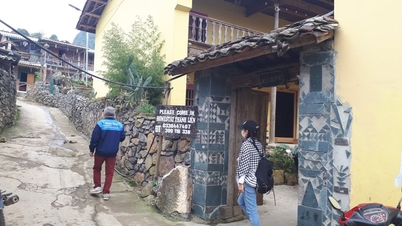






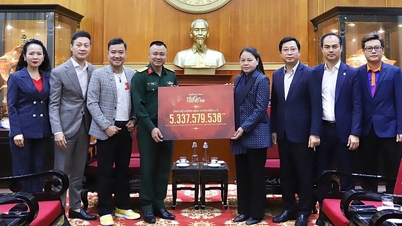












![[Photo] General Secretary To Lam receives Slovakian Deputy Prime Minister and Minister of Defense Robert Kalinak](https://vphoto.vietnam.vn/thumb/1200x675/vietnam/resource/IMAGE/2025/11/18/1763467091441_a1-bnd-8261-6981-jpg.webp)
![[Photo] General Secretary To Lam receives CEO of AP Moller-Maersk Group, Denmark](https://vphoto.vietnam.vn/thumb/1200x675/vietnam/resource/IMAGE/2025/11/18/1763462288958_a3-bnd-8222-2510-jpg.webp)
























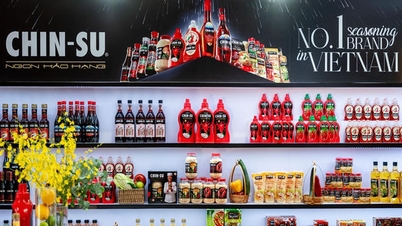










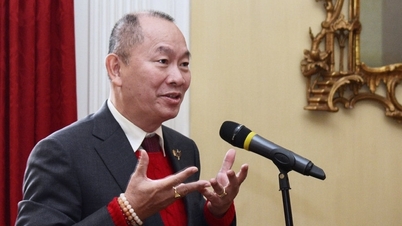










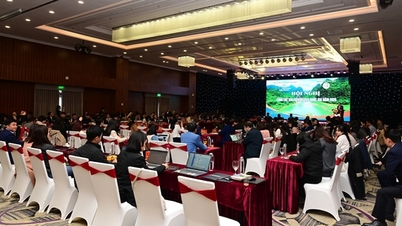

























Comment (0)